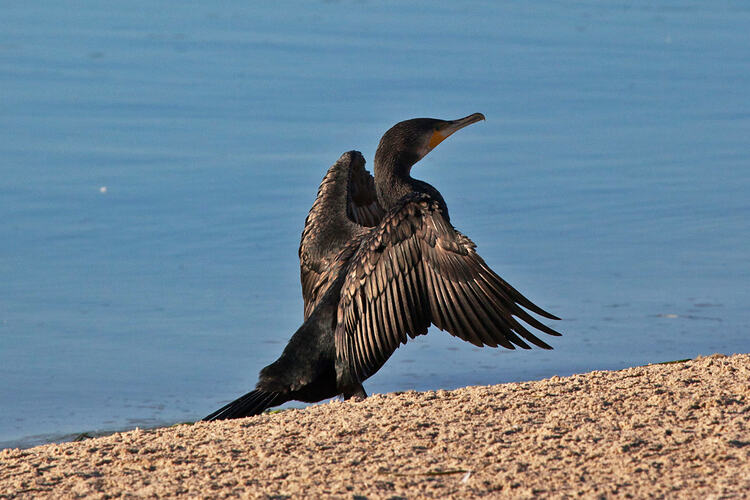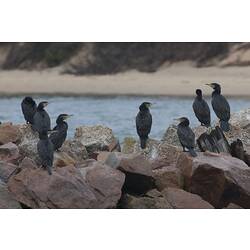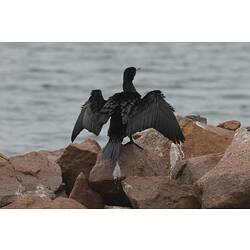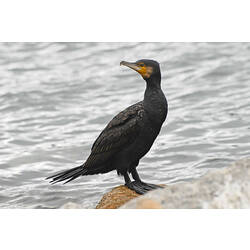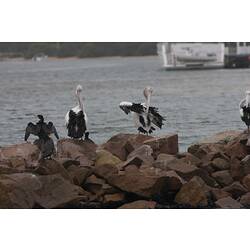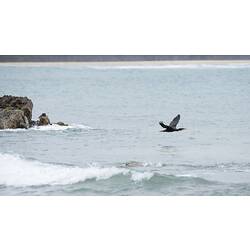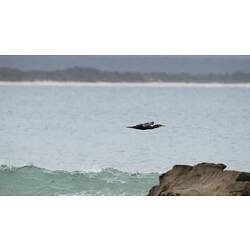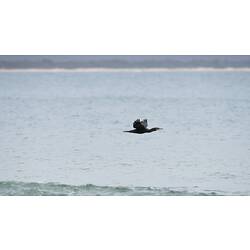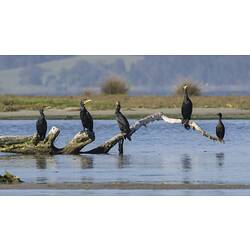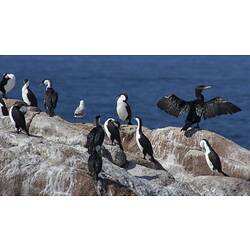General Description
The Great Cormorant has a black body with a yellow and white face. When breeding the birds have a white patch on the lower body above the legs. The legs are black and the hooked bill is grey. Juveniles are dull brown with a dull yellow throat pouch. Bill to tail length is up to 85 cm. They are Australia's largest cormorant. Great Cormorants look quite similar to Little Black Cormorants, Phalacrocorax sulcirostris, a similar but smaller and completely black species.
Biology
Great Cormorants nest in large colonies, commonly with other waterbirds including other cormorant species, spoonbills, herons and ibises. The colonies are along coastlines, inland waterways and wetlands. Breeding occurs throughout the year in response to food availability. Each nest is a large platform structure constructed from sticks, usually in a low tree near water. Occasionally, the nest is built on the ground. They feed mainly on fish but will also eat frogs and invertebrates including crustaceans. They dive underwater to catch their prey, using their feet to propel themselves along. Dives can last up to one minute. After diving, cormorants perch with their wings held out to the side to help their feathers dry.
Distribution
Europe, North America, Africa, India, Southeast Asia, China and Australasia. In Australia, they occur throughout the mainland and in Tasmania.
Habitat
Large freshwater water bodies, wetlands, estuaries and coastal inlets.
More Information
-
Animal Type
-
Animal SubType
-
Brief Id
A black waterbird with a yellow and white face.
-
Colours
Black
-
Maximum Size
85 cm
-
Habitats
-
Diet
Carnivore
-
Diet Categories
Fish, Invertebrates
-
Endemicity
-
Conservation Statuses
CITES: Not listed, FFG Threatened List: Not listed, EPBC Act 1999: Not listed, IUCN Red List: Least Concern
-
Taxon Name
-
Common Name
Great Cormorant
-
Kingdom
-
Phylum
-
Subphylum
-
Class
-
Order
-
Family
-
Genus
-
Species Name
carbo
